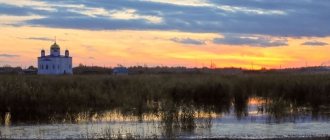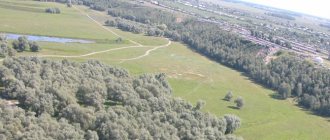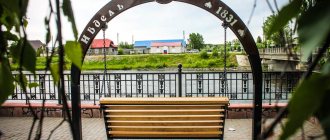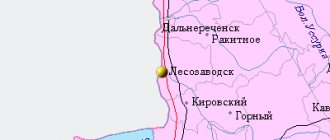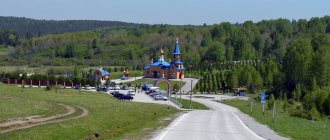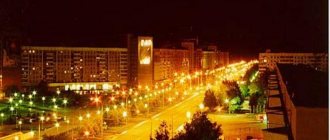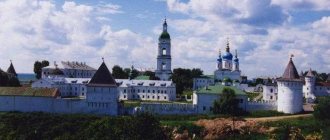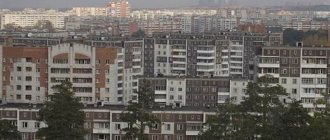For other places with the same name, see Uyar (localty).
City in Krasnoyarsk Krai, Russia
| Uyar Uyar | |
| City [1] | |
| Monument to Vladimir Lenin in Uyar | |
| Flag Coat of arms | |
| Location of Uyar | |
| Uyar Location of Uyar Show map of Russia Uyar Uyar (Krasnoyarsk region) Show map of Krasnoyarsk Territory | |
| Coordinates: 55°49′36″N 94°18′55″E / 55.82667°N W. 94.31528 ° E / 55.82667; 94.31528 Coordinates: 55°49′36″N 94°18′55″E / 55.82667°N W. 94.31528 ° E / 55.82667; 94.31528 | |
| A country | Russia |
| Federal subject | Krasnoyarsk region [1] |
| Administrative region | Uyarsky district [1] |
| District city | Uyar [1] |
| Known since | 1760 [2] |
| City status from | 1944 [2] |
| Height | 340 m (1120 ft) |
| population size (2010 Census) [3] | |
| • General | 12 665 |
| Administrative status | |
| • Capital from | Uyar district [1], district town of Uyar [1] |
| Municipal status | |
| • Municipal district | Uyarsky municipal district [4] |
| • Urban village | Urban settlement Uyar [4] |
| • Capital from | Uyar municipal district [4], urban settlement Uyar [4] |
| Timezone | UTC+7 (MSK+4[5]) |
| Postal code [6] | 663920 |
| OKTMO ID | 04657101001 |
| Web site | admuyar.ru |
Uyare
(Russian: Уяр) is a city and the administrative center of Uyarsky District in Krasnoyarsk Krai, Russia, located on the Uyarka River (Yenisei's basin) 132 km (82 mi) east of Krasnoyarsk. Population: 12,665 (2010 census); [3] 13,807 (2002 census); [7] 17040 (1989 census). [8]
Links[edit]
Notes[edit]
- ^ abcdefgh Law No. 10-4765
- ^ B s d "General information" (in Russian). Retrieved March 21, 2022.
- ^ a b Federal State Statistics Service (2011). “All-Russian Population Census 2010. Volume 1" [All-Russian Population Census 2010, vol. 1]. All-Russian Population Census 2010 [All-Russian Population Census 2010]
. Federal State Statistics Service. - ^ abcde Law No. 13-3040
- "On the Calculation of Time". Official Internet portal of legal information
. June 3, 2011. Retrieved January 19, 2022. - Post office. Information and computing center of OASU RPO. ( Post office
).
Search for postal service objects ( postal Search for objects
) (in Russian) - ↑
Federal State Statistics Service of Russia (May 21, 2004).
“The population of Russia, the constituent entities of the Russian Federation as part of federal districts, urban settlements, settlements, settlements is 3 thousand or more people” [Population of Russia, its federal districts, federal districts, districts Urban settlements, rural settlements - administrative centers and rural settlements with a population of over 3,000] (XLS). All-Russian Population Census 2002
. - “All-Union Population Census of 1989. The current population of the union and autonomous republics, autonomous regions and districts, territories, negative phenomena, urban settlements and villages, 10 facts that you did not know about the Trans-Siberian Railway.” Telegraph
.
Uyar
(Krasnoyarsk region)
OKATO code:
04257501
Founded:
1760
Urban settlement since:
1934
City since:
1944 City of district subordination (Uyarsky district of the Krasnoyarsk Territory)
Center:
Uyarsky district
Telephone code (reference phone)
| 39146***** | 22-100 |
Deviation from Moscow time, hours:
4
Geographic latitude:
55°49′
Geographic longitude:
94°19′
Altitude above sea level, meters:
340 Sunrise and sunset times in the city of Uyar
Culture
Improvement
As part of the federal project “Formation of a comfortable urban environment,” the northern and southern parts of the central park in the city of Uyar were landscaped in the period from 2022 to 2022. So, in 2022, volleyball, basketball and dance courts, new benches and trash cans were installed in the park, and a bicycle path also appeared in the park. Already in 2019, the public space was supplemented with active recreation areas for children and youth, including a workout area, swings and gazebos. New footpaths and walking trails have also appeared. It is noted that during the improvement of the park, workers did not cut down a single tree.
In total, more than 5.7 million rubles were allocated for the project, of which more than 5.1 million rubles came from the federal budget, almost 270 thousand from the regional budget and 369 thousand from the local budget. Local residents also took an active part in the improvement, who voted for the renewal of the park in 2022 and 2022, and also came to cleanup days, cleaned the park area of garbage and planted new flowers, shrubs and trees[29].
The project for improving the central park in Uyar was also included in the register of best practices for creating a comfortable urban environment of the Russian Ministry of Construction in 2022.
Cultural institutions
A network of cultural and leisure institutions operates in the city, among them: the Intersettlement Club System, the Uyarsky City House of Culture, the 3D cinema hall “Attraction”, etc.
Since 1959, the Uyarsky Folk Theater has been operating in the city;
There is a local history museum in the city library in Uyar;
Libraries (Central City, Russian Railways).
Attractions
Brick water tower (built in 1912) completely hand-built by local residents. It once again shows the unity of spirit of a considerable number of people who, in one way or another, took part in the “writing” of the history of Uyar, and, therefore, makes a strong impression on the beholder[30];
Memorial in honor of the memory of soldiers who died during the Great Patriotic War;
Memorial complex "Victory Tank"[31];
Foundation stone for Marshal Kuleshov;
Spaso-Preobrazhensky Cathedral (1874).
Population
| Population | ||||||||
| 1874[10] | 1939[11] | 1959[12] | 1967[10] | 1970[13] | 1979[14] | 1989[15] | 1992[10] | 1996[10] |
| 1100 | ↗15 347 | ↗21 646 | ↘20 000 | ↗20 581 | ↘18 028 | ↘17 040 | ↘17 000 | ↘16 600 |
| 1998[10] | 2000[10] | 2001[10] | 2002[16] | 2003[10] | 2005[10] | 2006[10] | 2007[10] | 2008[10] |
| ↘16 300 | ↘15 900 | ↘15 800 | ↘13 807 | ↘13 800 | ↘13 300 | ↘13 100 | ↘12 900 | ↘12 600 |
| 2009[17] | 2010[18] | 2011[10] | 2012[19] | 2013[20] | 2014[21] | 2015[22] | 2016[23] | 2017[24] |
| ↘12 518 | ↗12 665 | ↗12 700 | ↘12 485 | ↘12 444 | ↘12 319 | ↘12 295 | ↘12 209 | ↘12 074 |
| 2018[25] | 2019[26] | 2020[3] | ||||||
| ↘11 954 | ↗11 981 | ↘11 948 | ||||||
As of January 1, 2022, in terms of population, the city was in 863rd place out of 1,116[27]cities of the Russian Federation[28].
Map
| Uyar: maps |
Uyar: photo from space (Google Maps) Uyar: photo from space (Microsoft Virtual Earth)
| Uyar. Nearest cities. Distances in km. on the map (in brackets along roads) + direction. Using the hyperlink in the distance , you can get the route (information courtesy of the AutoTransInfo website) | |||
| 1 | Zaozerny | 29 (42) | NE |
| 2 | Zelenogorsk | 35 (60) | NE |
| 3 | Partisan | 36 (36) | YU |
| 4 | Shalinskoye | 36 (94) | Z |
| 5 | Borodino | 37 (58) | IN |
| 6 | Podgorny | 64 () | NW |
| 7 | Zheleznogorsk | 68 (128) | NW |
| 8 | Sosnovoborsk | 69 (108) | NW |
| 9 | Aginskoe | 72 (93) | SE |
| 10 | Irbeyskoe | 73 (114) | IN |
| 11 | Zykovo | 74 () | Z |
| 12 | Berezovka | 78 (89) | Z |
| 13 | Krasnoyarsk | 92 (109) | Z |
| 14 | Kansk | 95 (122) | NE |
| 15 | Sukhobuzimskoe | 98 (186) | NW |
| 16 | Yemelyanovo | 109 (135) | Z |
| 17 | Ilansky | 118 (144) | IN |
a brief description of
Located in the foothills of the Eastern Sayan, on the river. Uyarka (Yenisei basin), on the Moscow highway, 132 km east of Krasnoyarsk. Railway station.
Territory (sq. km): 72
Information about the city of Uyar on the Russian Wikipedia site
Historical sketch
Known since 1760, when a postal station and a Yamskaya hut were built. The settlement grew due to immigrants from Latvia, Ukraine, the Volga region, and the Oryol province. In the list of 1859 this is the village of Uyarskaya near the river. Uyar. In 1874, 1060 people lived in Uyar.
The form of the hydronym indicates the primacy of the hydronym, which makes the etymology from the Russian “u yar” unlikely. Perhaps the hydronym is a distortion of the formation from the ancient Turkic stem oy “pit, depression”, in Altai oyor “hollow out, pierce” and the hydronym Oyor (Oyur, Uyur). In Buryat, Mongolian oy “forest”, Yakut oyur, oyuur “forest”.
By the end of the 19th century. A railway station was built in Uyar (on the Trans-Siberian Railway). In 1897, the Uyarskaya station was renamed Olgino, in 1906 - Klyukvennaya (named after the track engineer). Gradually, the station and the village of Uyar merged into one settlement.
Working village of Uyar since 1934. City since 1944. In 1973, Klyukvennaya station was renamed Uyar.
A brick factory was opened in Uyar in 1922, in 1926 - the Klyukvensky refractory plant (based on open deposits of refractory clays), in 1948 - a mica pinching shop, then - the Uyar mica factory, in 1958 a reinforced concrete structures plant was built, in 1975 - asphalt concrete plant.
Economy
JSC - "Uyarochka" (milk, bakery, ceramic factory, forestry, meat processing plant.
Grain and fodder crops are grown in the Uyarsky district. They raise cattle and pigs.
Deposits of kaolin clay, sand, gravel, granite.
Architecture, sights
In the Uyarsky district, in the village of Olgino, there is a wooden church (early 20th century).
| Population by year (thousands of inhabitants) | |||||||
| 1874 | 1.1 | 1996 | 16.6 | 2008 | 12.6 | 2017 | 12.1 |
| 1939 | 15.3 | 1998 | 16.3 | 2010 | 12.4 | 2018 | 12.0 |
| 1959 | 21.6 | 2000 | 15.9 | 2011 | 12.7 | 2019 | 12.0 |
| 1967 | 20 | 2001 | 15.8 | 2012 | 12.5 | 2020 | 11.9 |
| 1970 | 20.6 | 2003 | 13.8 | 2013 | 12.4 | 2021 | 11.9 |
| 1979 | 18.0 | 2005 | 13.3 | 2014 | 12.3 | ||
| 1989 | 17.0 | 2006 | 13.1 | 2015 | 12.3 | ||
| 1992 | 17 | 2007 | 12.9 | 2016 | 12.2 | ||
Transport
Railway station on the Trans-Siberian Railway.
The city is approached by a 56-kilometer railway line from Sayanskaya station to Uyar station, connecting the South Siberian and Trans-Siberian railways. The line completes the railway “ring” Uyar—Krasnoyarsk—Achinsk—Abakan—Sayanskaya—Uyar, which unites the most developed part of the region into a single whole. Uyar lies on the Moscow Highway, and the Trans-Siberian Oil Pipeline passes through it.
From the city bus station, buses regularly depart to the cities of Krasnoyarsk, Kansk, Ilansky, Taishet; villages of Zapasnoy Imbezh, Partizanskoye, Vershino-Rybnoye.
Intracity transport is represented by buses and minibuses:
Buses
№ 2
(Railway station - Central District Hospital - School No. 4 - ATP)
№ 4
(Railway station - Central District Hospital - Oil pipeline)
Route taxis
№ 1
(Depot - Kalinina)
№ 5
(MUP "GKH" - Iskra)
Uyar village
XVIII century
.
Founded in 1760, when retired soldier Ivan Talaleev
from the Simbirsk province, he set up his hut on the bank of the Uyarka River near a clay ravine (hence the name). A postal station and a Yamskaya hut were then located not far from his house.
19th century
.
The settlement grew due to immigrants arriving here from Latvia, Ukraine, the Volga region, and the Oryol province.
The Uyar parish of the Church of the Transfiguration of the Lord was opened in 1874 after the construction of the church by separating them from the Ryabinsky parish.
The parish included: the village of Uyar, the village of Sushinova (8 versts).
The church was wooden with two altars in honor of the Transfiguration of the Lord and Saint Nicholas. Every year on May 21, the parish held a religious procession from the village of Rybinskoye to Uyarskoye with the Tikhvin Icon of the Mother of God.
The parish had chapels:
- in the village of Uyarskoye, built in 1816 on the site of an old cemetery,
- in the village of Sushnikovo, built in 1906.
XX century
.
At the beginning of the 20th century, the village of Uyar was part of the Uyar volost of the Kansky district of the Yenisei province. In the village there were:
| 1874 | 1917 | 1928 | |
| yards | 233 (guardians), 130 (new settlers) | 594 | |
| total inhabitants | 1060 | 1763 | 2533 |
| l.m.p. | 871 | 1197 | |
| l.z.p. | 892 | 1336 |
The regular clergy consisted of a priest and a psalm-reader with a salary of 300 rubles. priest and 100 rubles. to the psalmist. There were 350 poods per clergy. Income for required correction was up to 1,300 rubles. in year. There were post houses. Haymaking land - 67 acres. The church capital was 558 rubles. 15 k. on a book in the savings bank and 800 rubles. was sent for the construction of the Diocesan apartment building.
In the village there was: a church, a chapel, a 2-year school for 3 teachers and 130 students, a chamber of a peasant chief and a justice of the peace, an agricultural society, a library-reading room, a consumer society, a credit partnership, and a postal and telegraph office.
Participants in military conflicts of the 19th-20th centuries.
In 1928, the village of Uyar was the center of the village council, which included:
- Uyar village on the Uyarka river,
- Andreev's settlement at the Tulyaka stream, 9 versts, founded by Russian settlers in 1914,
- Bondarev's village 7 versts, founded by Russian settlers in 1911,
- Dmitriev's village at the Ozernaya river, 6 versts,
- Yesesin's village at the Belichiy stream, 7 versts, founded by Russian settlers in 1876,
- Zaimka of the Lapukhins at the Poperechny stream, 7 versts, founded by Russian settlers in 1876,
- Zaimka Lisakova near the Uyarka River, 2 versts, founded by Little Russian settlers in 1915,
- Zaimka of the Panaevs at the Tulsky stream, 5 versts, founded by Russian settlers in 1906,
- Zaimka Khrenkov 9 versts, founded by Russian settlers in 1925,
- Zaimka of the Shudrovs at the Poperechny stream, 6 versts, founded by Russian settlers in 1876,
The village council was part of the Uyarsky district (the regional center in the village of Klyukvenny, 2 versts away) of the Krasnoyarsk district of the Siberian Territory.
In the village there was: a village council, a 7-year school, a reading hut, a school for the illiterate, an agricultural store, a collective farm, a store, a telephone, a savings bank, a library, an agricultural enterprise, a veterinary service, a post office phone. , std.
In 1938 the church was closed. Some of the property was looted; the temple itself was preserved, but lost the wooden bell tower at the vestibule. From 1938 to 1946, the building of the Transfiguration Church was used as a school and even as a vehicle garage. At that time the building was badly damaged.
In the first half of the 20th century, natives of the village were subjected to repression.
Natives of the village did not return from the WWII fronts. .
Education
In Uyar there are several secondary vocational educational institutions (vocational school, agricultural technical school);
4 secondary schools (School No. 2, School No. 3, School No. 4, School No. 40,) + Uyar boarding school;
6 preschool educational institutions (Kindergarten “Smile”, Kindergarten “Kolobok”, Kindergarten “Solnyshko”, Kindergarten No. 189 Russian Railways, Kindergarten “Malyshok”, Kindergarten “Teremok”);
Center for additional education "Pioneer".
